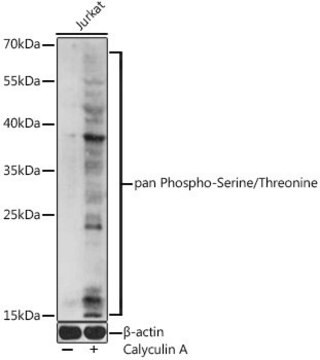81210
Poly(ethylene glycol)
average Mw 1,500
Synonym(s):
Polyethylene glycol, PEG
Sign Into View Organizational & Contract Pricing
All Photos(1)
About This Item
Linear Formula:
H(OCH2CH2)nOH
CAS Number:
MDL number:
UNSPSC Code:
12352104
PubChem Substance ID:
NACRES:
NA.23
Recommended Products
Product Name
Poly(ethylene glycol), average Mw 1,500
form
solid
Quality Level
mol wt
average Mw 1,500
mp
45-50 °C
transition temp
Tm 45-50 °C
Ω-end
hydroxyl
α-end
hydroxyl
SMILES string
C(CO)O
InChI
1S/C2H6O2/c3-1-2-4/h3-4H,1-2H2
InChI key
LYCAIKOWRPUZTN-UHFFFAOYSA-N
Looking for similar products? Visit Product Comparison Guide
Related Categories
General description
Poly(ethylene glycol) (PEG) is a non-ionic hydrophilic polymer and is available in different molecular weights. It helps in the purification and crystal growth of proteins and nucleic acids. PEG and dextran together result in aqueous polymer two phase system, required for the purification of biological materials. PEG also interacts with cell membrane, thereby resulting in cell fusion.
Application
Poly(ethylene glycol) has been used for histological, histochemical and immunohistochemical evaluation of in vitro cultured beads. It has been used for the fusion of cells.
Other Notes
Molecular weight range: 1,400-1,600
Storage Class Code
11 - Combustible Solids
WGK
WGK 1
Flash Point(F)
Not applicable
Flash Point(C)
Not applicable
Personal Protective Equipment
dust mask type N95 (US), Eyeshields, Gloves
Choose from one of the most recent versions:
Already Own This Product?
Find documentation for the products that you have recently purchased in the Document Library.
Customers Also Viewed
Chondrogenesis of human mesenchymal stem cells encapsulated in alginate beads.
Ma HL et al.
Journal of Biomedical Materials Research Part A, 64, 273-273 (2003)
Poly (ethylene glycol) in drug delivery: pros and cons as well as potential alternatives.
Angewandte Chemie (International Edition in English), 49, 6288-6308 (2010)
DC-SIGN (CD209) expression is IL-4 dependent and is negatively regulated by IFN, TGF-beta, and anti-inflammatory agents.
Relloso M et al.
Journal of Immunology, 168, 2634-2634 (2002)
Poly(Ethylene Glycol) Chemistry: Biotechnical and Biomedical Applications (2013)
Idalis Villanueva et al.
Acta biomaterialia, 5(8), 2832-2846 (2009-06-11)
The pericellular matrix (PCM) surrounding chondrocytes is thought to play an important role in transmitting biochemical and biomechanical signals to the cells, which regulates many cellular functions including tissue homeostasis. To better understand chondrocytes interactions with their PCM, three-dimensional poly(ethylene
Our team of scientists has experience in all areas of research including Life Science, Material Science, Chemical Synthesis, Chromatography, Analytical and many others.
Contact Technical Service



